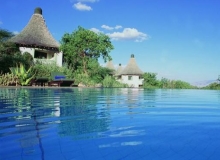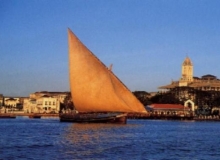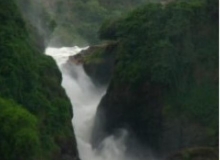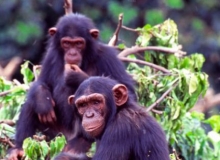
Speak to a specialist
0208 777 4873
0208 777 4873
Places to see: Africa

LAKE MANYARA NATIONAL PARK
Area ' 325 km2
Cradled in the glory of its surrounding below the sheer majesty of the Rift Valley wall, Lake Manyara lies serene, spreading in a heat haze backed by a thin green band of forest and the sheer 600 meter red and brown cliffs of the escarpment. There are several different types of forests with a variety of fauna-hippopotamuses, giraffes, elephants, lions sleeping in trees, zebras, monkeys. The park hosts 400 varieties of birds, including thousands of red billed quelea flitting over the water like swarms of giant insects; pelicans, cormorants and pink streaks of thousands of flamingo on their perpetual migration. You enter Manyara from the village of Mto WA Mbu, an eclectic market town where several tribes converge to form a linguistic mix that is the richest in Africa.
Cradled in the glory of its surrounding below the sheer majesty of the Rift Valley wall, Lake Manyara lies serene, spreading in a heat haze backed by a thin green band of forest and the sheer 600 meter red and brown cliffs of the escarpment. There are several different types of forests with a variety of fauna-hippopotamuses, giraffes, elephants, lions sleeping in trees, zebras, monkeys. The park hosts 400 varieties of birds, including thousands of red billed quelea flitting over the water like swarms of giant insects; pelicans, cormorants and pink streaks of thousands of flamingo on their perpetual migration. You enter Manyara from the village of Mto WA Mbu, an eclectic market town where several tribes converge to form a linguistic mix that is the richest in Africa.

ZANZIBAR ISLAND
Zanzibar is an archipelago made up of Zanzibar and Pemba Islands, and several islets. It is located in the Indian Ocean, about 25 miles from the Tanzanian coast, and 6° south of the equator. Zanzibar Island (known locally as Unguja, but as Zanzibar internationally) is 60 miles long and 20 miles wide, occupying a total area of approximately 650 square miles.
The historic Stone Town of Zanzibar is a fascinating maze of narrow streets with overhanging balconies and huge intricately carved wooden doors. The place is full of pungent perfume of exotic spices. It was the ancient trading port of the sultans of Oman in the 19th century. This city is a medina: the only of its kind south of the Equator. Zanzibar Island can boast kilometers of golden beaches. Inland the island is Garden of Eden offering the most exquisite tropical species.

MURCHISON FALLS NATIONAL PARK
Area - over 4,000 square kilometers
Approx. distance from Kampala: 300 Km estimated transit time: 4 1/2 - 5 Hrs
The largest park in Uganda renowned for its scenic beauty and the spectacular Water Falls from which it gets its name. No visit to Murchison Falls would be complete without a visit to the magnificent falls. They can be viewed from the top where the Nile River narrows from 50 meters to crash through a 7-meter gorge, falling 45 meters to the rocks below. Avid birdwatcher will want to seek out some of the 424 species identified in the park. Fishermen can test their skills above and below the Falls, waiting patiently for 20-70 kg Nile perch. Other game fish found in the Nile include Barbel, Electric Catfish and Tiger fish. While on the game drives, Cape buffalo, Rothschild's giraffe, Uganda kob, hartebeest and waterbuck are commonly seen. You may also spot Oribi, bushbuck, Bohor reedbuck, shy Sitatunga, bush duiker, warthog and bush pig. Large carnivores include lion, leopard and spotted hyena. Chimpanzees and olive baboons head the list of six species of primates found in the park. Crocodile and hippo will be seen along the banks of the Nile. Some of the more common birds that can be seen include goliath heron, Egyptian geese, pelican, bee-eaters, kingfishers, hornbill, cormorant, saddle-bill stork and the rare shoebill stork. A boat cruise to the delta is a highlight for the avid birdwatcher.
Approx. distance from Kampala: 300 Km estimated transit time: 4 1/2 - 5 Hrs
The largest park in Uganda renowned for its scenic beauty and the spectacular Water Falls from which it gets its name. No visit to Murchison Falls would be complete without a visit to the magnificent falls. They can be viewed from the top where the Nile River narrows from 50 meters to crash through a 7-meter gorge, falling 45 meters to the rocks below. Avid birdwatcher will want to seek out some of the 424 species identified in the park. Fishermen can test their skills above and below the Falls, waiting patiently for 20-70 kg Nile perch. Other game fish found in the Nile include Barbel, Electric Catfish and Tiger fish. While on the game drives, Cape buffalo, Rothschild's giraffe, Uganda kob, hartebeest and waterbuck are commonly seen. You may also spot Oribi, bushbuck, Bohor reedbuck, shy Sitatunga, bush duiker, warthog and bush pig. Large carnivores include lion, leopard and spotted hyena. Chimpanzees and olive baboons head the list of six species of primates found in the park. Crocodile and hippo will be seen along the banks of the Nile. Some of the more common birds that can be seen include goliath heron, Egyptian geese, pelican, bee-eaters, kingfishers, hornbill, cormorant, saddle-bill stork and the rare shoebill stork. A boat cruise to the delta is a highlight for the avid birdwatcher.

MGAHINGA GORILLA NATIONAL PARK
Area - 34 square kilometers
Approx. distance from Kampala: 510 km estimated transit Time: 8-10 Hrs
It is the Ugandan part of the Virunga Conservation Area, where half of the world's mountain gorillas make their home, this park shares boundary with Rwanda and Congo/Zaire. The park is comprised of parts of three extinct volcanic mountains, Mt. Muhavura (4127 m), Mt. Gahinga (3475 m) and Mt. Sabyinyo (3645 m). The vegetation of Mgahinga is typically afro-montane, with a forest belt, a bamboo zone, an ericaceous belt and an alpine zone. The park supports a variety of animal species including gorilla, rare golden monkey, buffalo, elephant, leopard and several cats. There are also over 180 species of bird found in the region. Among these are the handsome fancolin, the Rwenzori touraco and the side-breasted tit. About 45 mountain gorillas use the Mgahinga sector of the Virunga Conservation Area seasonally. Gorilla trekking is available here when the gorillas are in the park. They are usually resident in the months of April, May and June and October, November and December. Mgahinga also offers a number of other exciting half-day hikes and the challenge of a full-day climb to the summit of Mt. Muhavura or Mt. Gahinga, or the breathtaking Sabyinyo Gorge.
Approx. distance from Kampala: 510 km estimated transit Time: 8-10 Hrs
It is the Ugandan part of the Virunga Conservation Area, where half of the world's mountain gorillas make their home, this park shares boundary with Rwanda and Congo/Zaire. The park is comprised of parts of three extinct volcanic mountains, Mt. Muhavura (4127 m), Mt. Gahinga (3475 m) and Mt. Sabyinyo (3645 m). The vegetation of Mgahinga is typically afro-montane, with a forest belt, a bamboo zone, an ericaceous belt and an alpine zone. The park supports a variety of animal species including gorilla, rare golden monkey, buffalo, elephant, leopard and several cats. There are also over 180 species of bird found in the region. Among these are the handsome fancolin, the Rwenzori touraco and the side-breasted tit. About 45 mountain gorillas use the Mgahinga sector of the Virunga Conservation Area seasonally. Gorilla trekking is available here when the gorillas are in the park. They are usually resident in the months of April, May and June and October, November and December. Mgahinga also offers a number of other exciting half-day hikes and the challenge of a full-day climb to the summit of Mt. Muhavura or Mt. Gahinga, or the breathtaking Sabyinyo Gorge.
Subscribe here to our monthly newsletters


